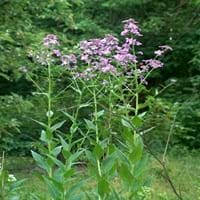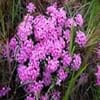Life Span
Perennial
Biennial
Type
Broadleaf Evergreen
Herbs
Origin
Hybrid origin, Japan
Southern Europe, Western Europe, Russia/Siberia, Central Asia, Western Asia
Types
Bigleaf hydrangea, Hortensia, Smooth hydrangea, Oakleaf hydrangea, Annabelle
Summer lilac, Winter gilliflower
Number of Varieties
Not Available
Habitat
Forest edges, Hillside, Woods
meadows, Open areas, Roadsides, Woodlands
USDA Hardiness Zone
7-9
4-9
AHS Heat Zone
Not Available
9 - 1
Habit
Upright/Erect
Clump-Forming
Flower Color
Hot Pink
White, Pink, Lavender
Flower Color Modifier
Bicolor
Bicolor
Fruit Color
Brown, Black
Not Available
Leaf Color in Spring
Dark Green
Green, Dark Green
Leaf Color in Summer
Dark Green
Green, Dark Green
Leaf Color in Fall
Dark Green
Green, Dark Green
Leaf Color in Winter
Dark Green
Light Green
Leaf Shape
Oblovate
Ovate
Plant Season
Spring, Summer, Fall, Winter
Spring, Summer
Sunlight
Full Sun, Partial Sun, Partial shade
Full Sun, Partial Sun
Type of Soil
Loam
Clay, Loam, Sand
The pH of Soil
Acidic, Neutral
Neutral, Alkaline
Soil Drainage
Well drained
Well drained
Bloom Time
Fall, Late Fall, Early Winter, Winter
Late Spring, Early Summer, Summer
Tolerances
Not Available
Not Available
Where to Plant?
Container, Ground
Container, Ground
How to Plant?
Seedlings, Stem Planting
Seedlings, Stem Planting, Transplanting
Plant Maintenance
Medium
Medium
Watering Requirements
Not Available
Average Water Needs, Water when top layer of soil becomes dry
In Summer
Drought Tolerant
Lots of watering
In Spring
Moderate
Moderate
In Winter
Average Water
Average Water
Soil pH
Acidic, Neutral
Neutral, Alkaline
Soil Type
Loam
Clay, Loam, Sand
Soil Drainage Capacity
Well drained
Well drained
Sun Exposure
Full Sun, Partial Sun, Partial shade
Full Sun, Partial Sun
Pruning
Remove damaged leaves, Remove dead branches, Remove dead leaves
Remove damaged leaves, Remove dead branches, Remove dead leaves
Fertilizers
All-Purpose Liquid Fertilizer
All-Purpose Liquid Fertilizer
Pests and Diseases
Red blotch
Red blotch
Plant Tolerance
Not Available
Drought
Flower Petal Number
Semi-Double
Single
Foliage Texture
Medium
Medium
Foliage Sheen
Glossy
Matte
Attracts
Bees, Flies
Bees, Butterflies, Hummingbirds, Insects
Allergy
Chest tightness, Diarrhea, Dizziness, Nausea, Vomiting
Vomiting
Aesthetic Uses
Not Available
Bouquets, Landscape Designing, Showy Purposes
Beauty Benefits
Not Available
Not Available
Edible Uses
Not Available
Yes
Environmental Uses
Air purification
Air purification
Medicinal Uses
Fever, Kidney problems, Urinary tract problems
Nutrients
Part of Plant Used
Flowers, Root
Flowers, Leaves, Seeds
Other Uses
Not Available
Showy Purposes, Used As Food, Used as Ornamental plant
Used As Indoor Plant
Not Available
Yes
Used As Outdoor Plant
Yes
Yes
Garden Design
Container, Cutflower, Feature Plant, Hedges, Mixed Border, Topiary, Bonsai, Espalier
Cutflower, Mixed Border, Wildflower
Botanical Name
CAMELLIA hiemalis 'Kanjiro'
HESPERIS matronalis
Common Name
Kanjiro Camellia, Snow Camellia
Dame's Rocket, Sweet Rocket
In Hindi
Hydrangea
डेम के रॉकेट
In German
Hortensie
Rockets Freifrau
In French
Hortensia
Rocket Dame
In Spanish
Hortensia
Rocket Dame
In Greek
υδραγεία
Rocket Dame του
In Portuguese
Hortênsia
Rocket de Dame
In Polish
Hortensja
Rocket Dame
In Latin
Hibiscus
Hesperis Rocket
Phylum
Not Available
Magnoliophyta
Class
Not Available
Magnoliopsida
Order
Not Available
Brassicales
Family
Theaceae
Brassicaceae
Genus
Not Available
Hesperis
Clade
Not Available
Angiosperms, Asterids, Eudicots
Tribe
Not Available
Hylocereeae
Subfamily
Not Available
Cactoideae
Number of Species
Not Available
Not Available
Properties of Kanjiro Camellia and Dame's Rocket
Wondering what are the properties of Kanjiro Camellia and Dame's Rocket? We provide you with everything About Kanjiro Camellia and Dame's Rocket. Kanjiro Camellia doesn't have thorns and Dame's Rocket doesn't have thorns. Also Kanjiro Camellia does not have fragrant flowers. Kanjiro Camellia has allergic reactions like Chest tightness, Diarrhea, Dizziness, Nausea and Vomiting and Dame's Rocket has allergic reactions like Chest tightness, Diarrhea, Dizziness, Nausea and Vomiting. Compare all the properties and characteristics of these two plants. Find out which of these plant can be used as indoor plant. If you are interested to decorate your house and garden, find out aesthetic uses, compare them and select the plant which will beautify your surrounding. Along with beautification, try comparing medicinal and edible uses of Kanjiro Camellia and Dame's Rocket and you can choose the plant having best and most benefits.
Season and Care of Kanjiro Camellia and Dame's Rocket
Season and care of Kanjiro Camellia and Dame's Rocket is important to know. While considering everything about Kanjiro Camellia and Dame's Rocket Care, growing season is an essential factor. Kanjiro Camellia season is Spring, Summer, Fall and Winter and Dame's Rocket season is Spring, Summer, Fall and Winter. The type of soil for Kanjiro Camellia is Loam and for Dame's Rocket is Clay, Loam, Sand while the PH of soil for Kanjiro Camellia is Acidic, Neutral and for Dame's Rocket is Neutral, Alkaline.
Kanjiro Camellia and Dame's Rocket Physical Information
Kanjiro Camellia and Dame's Rocket physical information is very important for comparison. Kanjiro Camellia height is 335.00 cm and width 255.00 cm whereas Dame's Rocket height is 60.00 cm and width 60.00 cm. The color specification of Kanjiro Camellia and Dame's Rocket are as follows:
Kanjiro Camellia flower color: Hot Pink
Kanjiro Camellia leaf color: Dark Green
Dame's Rocket flower color: White, Pink and Lavender
- Dame's Rocket leaf color: Green and Dark Green
Care of Kanjiro Camellia and Dame's Rocket
Care of Kanjiro Camellia and Dame's Rocket include pruning, fertilizers, watering etc. Kanjiro Camellia pruning is done Remove damaged leaves, Remove dead branches and Remove dead leaves and Dame's Rocket pruning is done Remove damaged leaves, Remove dead branches and Remove dead leaves. In summer Kanjiro Camellia needs Drought Tolerant and in winter, it needs Average Water. Whereas, in summer Dame's Rocket needs Lots of watering and in winter, it needs Average Water.


